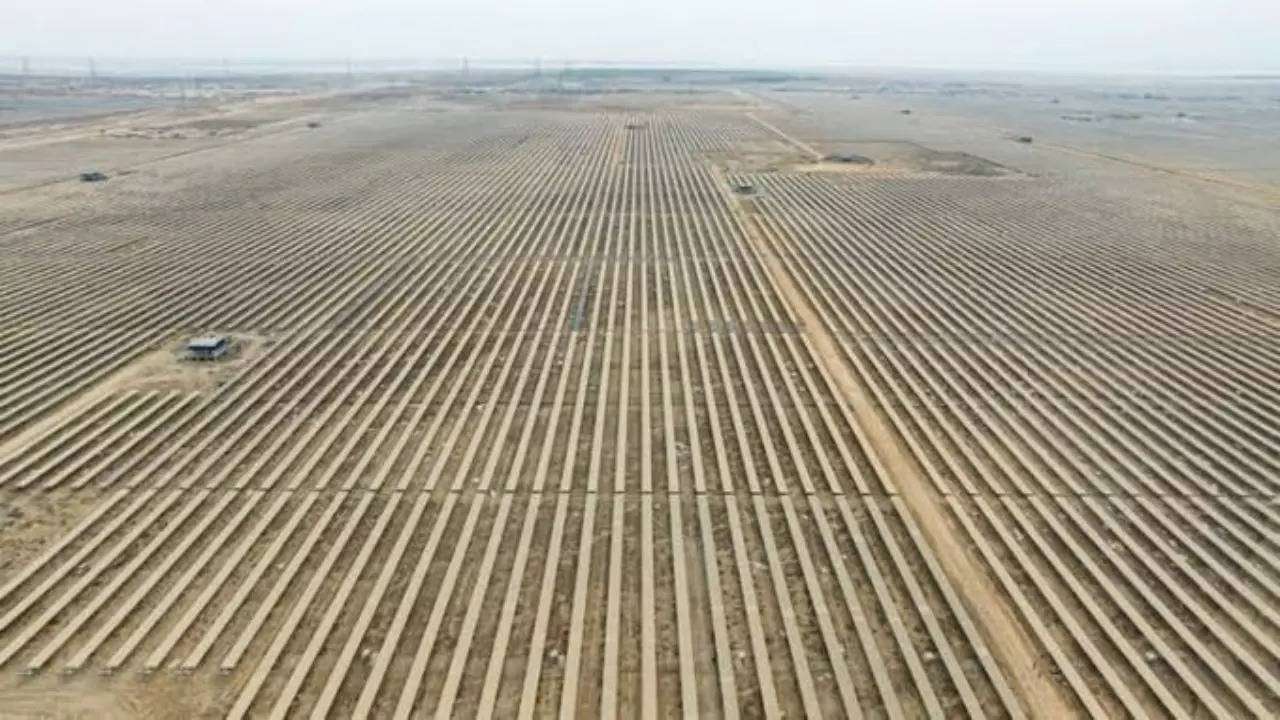Description

Disclaimer: Copyright infringement not intended.
Context
- In a remote area bordering Pakistan, Gautam Adani's group has built the world's largest renewable energy park in Gujarat's Khavda region, boasting a massive 45 GW capacity for generating electricity largely from solar energy.
- Adani's group proceeded to install solar panels, erect windmills, and establish worker colonies and desalination plants, turning the barren land into a thriving hub of renewable energy production.
Development Plans:
- Investment: Adani Green Energy Ltd plans to invest approximately Rs 1.5 lakh crore to generate 30 megawatts of clean electricity at Khavda, aiming to add 4 GW in the current fiscal year and 5 GW annually thereafter.
- Challenges: The area's remoteness presents challenges like heavy dust storms and lack of infrastructure, but Adani Group has undertaken measures to address them.

Power Generation and Ambitions:
- Scope: At its peak, Khavda will generate 81 billion units of power, equivalent to powering entire nations such as Belgium, Chile, and Switzerland.
- Ambition: Adani Group's renewable energy plans aim to generate 500 GW of electricity from non-fossil sources by 2030, contributing to a broader goal of achieving net-zero emissions by 2070.
Construction and Infrastructure:
- Preparation: Extensive studies and assessments were conducted before commencing development, including geotechnical investigations, seismic studies, and feasibility assessments.
- Initiative: Construction began in 2022, focusing on infrastructure development, including roads, drainage systems, desalination plants, and enhanced connectivity measures such as laying optical fiber cables.
|
PRACTICE QUESTION
Q. Discuss India's renewable energy ambitions, including targets, achievements, challenges, and government policies driving the transition. Assess the socio-economic and environmental impacts of these initiatives and propose strategies to address implementation challenges.
|













